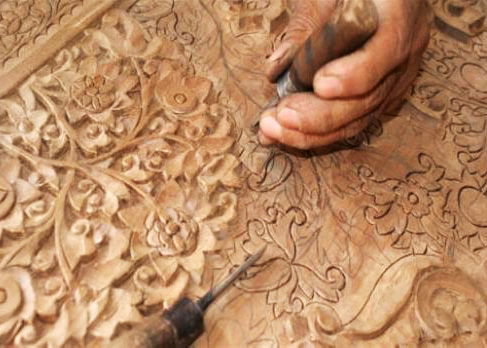Wood Carving

Persian art or Iranian art has one of the richest art heritages in world history with art such as; architecture, painting, weaving, pottery, calligraphy, metalworking, sculpture and wood carvings.
Wood carvings are achieved by:
- Fastening a piece of the wood which is going to be inlaid to the vice or is fastened to the worktable manual vice
- The background of the surface can be carved with the flat gouge. It can also be cut by a drill or saw. After cutting around the background, the carved-latticed work is made.
- Then some slight parts of the curves and inside the work are filed, which is called Seftkari or working on hard surface.
- Afterwards, some oil is poured on the worked surface to soften the wood and create an oily surface perfect for carving.
- Following that, the tip of the gouge is beaten slightly by the hand palm or an apparatus called Takhmagh to cut off around the work so that the background of the work is lowered as deep as needed, all the same in depth.
- Now it is the turn of polishing the job with gouge or some apparatus called Lisseh.
- Some blows onto the tips of the different gouges with the palm of the hand to carve other parts of the job can be made. In this way curves, straight lines concave and convex parts of the woodcarving is achievable.
For importing opportunities of wood carvings from Iran, contact Ubiquity International Trading.


